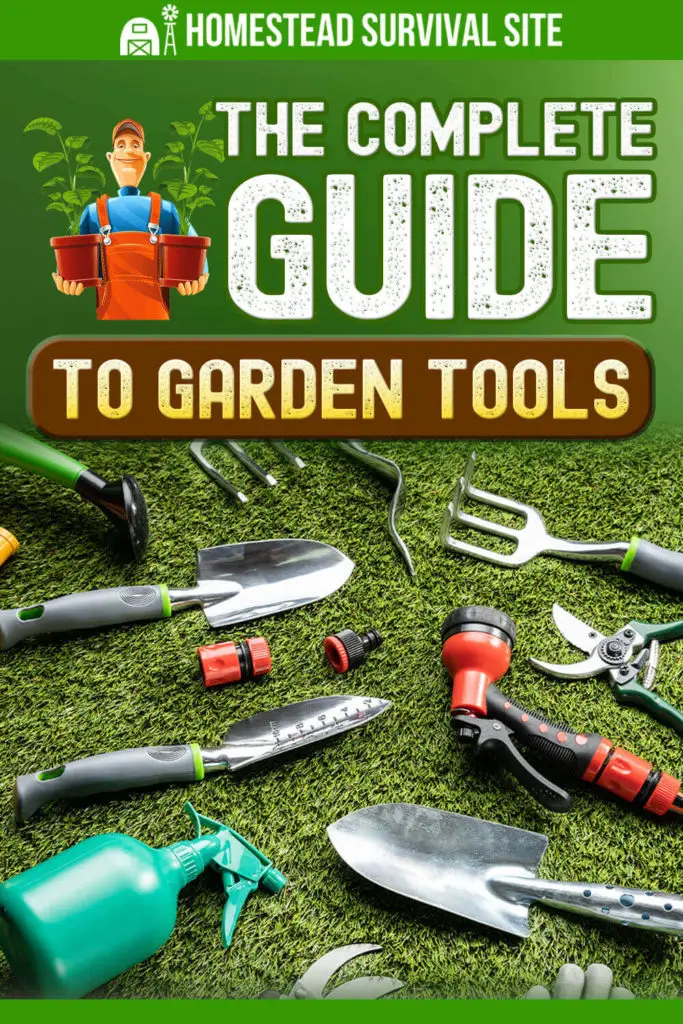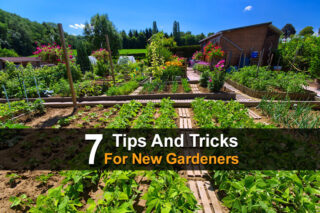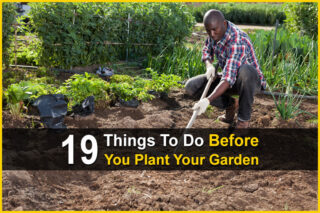Estimated reading time: 10 minutes
My dad always told me to use the right tool for the job. He had a good point – using the right tool definitely makes the hard work easier, and the same is true for gardening.
So if you have a gardening job to do, make sure you use the right tool! There are plenty of options to choose from, so we’ve come up with a complete guide to garden tools, so you’ll always know which is the right one for the job.
In this article, we’re going to talk about the best garden tools and what they’re for. Then, we’ll give you some ideas of how to use them.
Want to save this post for later? Click Here to Pin It On Pinterest!
Digging Tools

Standard spade or shovel. Every gardener needs a good spade. Look for a solid digging shovel. Many are made with steel and have a point in the center to help you get under rocks and get through hard clay.
Transplanting Shovel
A transplanting shovel is specifically designed to help you plant your seedlings and bulbs. It has a long narrow blade with a rounded tip to help you dig small, deep holes just right for your bulbs and small plants.
Hand Trowel
Hand trowels are great for container gardening, transplanting seedlings, and working in any small flowerbed. You can dig holes or dig out weeds. The longer and thinner it is, the easier it will be to work hard soil.
Hand Cultivator
A hand cultivator has a long handle like a spade, but on the end is a set of tines. The tines may be shaped like a fork or a claw. You can use it to loosen and aerate the soil by hand without having to bend over and break your back.
Edging Spade
An edging spade helps you cut through the grass along the edges of your walkways, garden, or anywhere you need a clean line. These might be flat, steel square blades with a handle like a shovel, or they may be curved and serrated like a saw for easier cutting.
Bulb Planter
A bulb planter is a small hand tool that pulls out just enough soil to plant your bulb. They typically have a large serrated bottom and depth markings on the side, so you know how deep to dig. You can see a video on how a bulb planter works here.
Cultivator
A cultivator aerates the soil and helps large clumps break up into finer soil. A hand cultivator will have a set of rotating splines on the end of a long handle, so you can walk along the garden and cultivate small sections at a time without bending over.
Gas-Powered Tiller
A gas-powered tiller is a larger piece of equipment that can break up hard soil and roots in your garden. You can use a tiller to turn over the soil in your garden to make it loose or to turn a grassy spot into a garden.
Weeding Tools
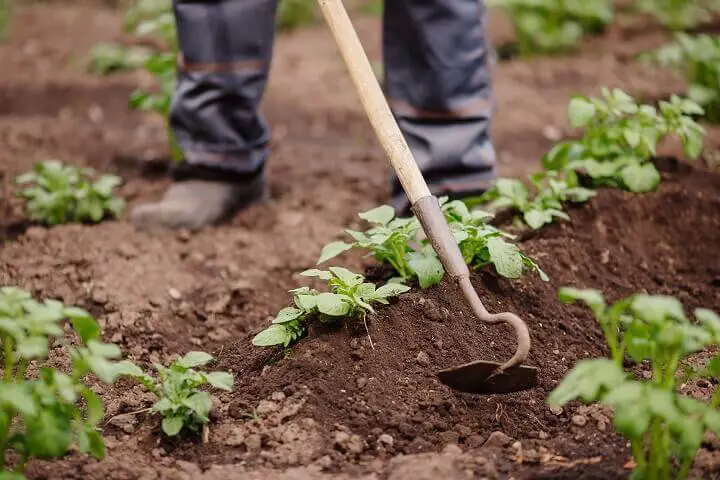
Hoe
A standard garden hoe can help remove weeds and loosen hard soil. A hoe has a long handle with a blade at the end. The blade can be thin – for planting, or broader, for cultivating. Some hoes have a fork opposite the blade to dig out deeper roots. You can see different types of hoes here.
Hand Weeder
A hand weeder is a small hand tool that helps you dig out weeds. It might take the shape of a standard hoe but in miniature size. It may also look like a tiny fork. Use hand weeders to get underneath weeds and pull them out by the roots.
Claw
If you want to get rid of weeds without all the bending, you may want to try a garden claw. These are similar to hand tillers. A long handle has four claw-shaped tines on the bottom and a wide bar handle at the top. Place the claw over the weed and twist to pull it out.
Cutting Tools
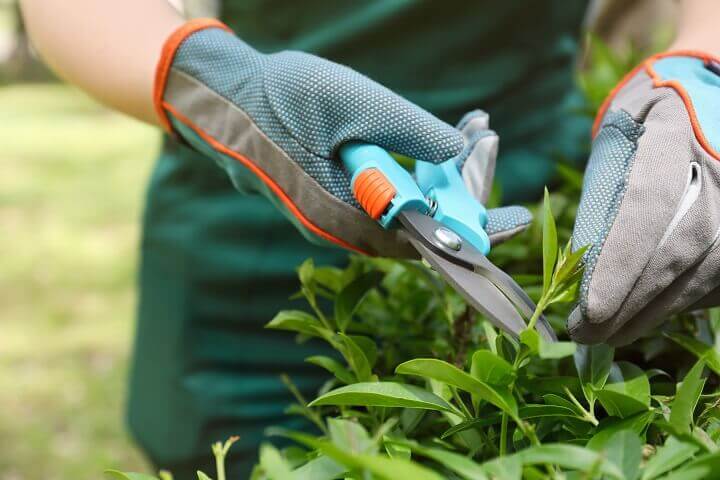
Scythe
An old-fashioned scythe is a great way to cut grass and chop and drop weeds or cover crops for mulch. Scythes come in long handle varieties to work in larger areas or short handle varieties for smaller areas.
Loppers
For big pruning jobs, you may want a pair of loppers. They look similar in appearance to a bolt cutter, but they’re meant for cutting branches and thick weeds.
Hand Pruner
For trimming smaller plants, you’ll probably be looking at something like a hand pruner. These fit in one hand, like a pair of scissors, and are meant for pruning back rose bushes, berry bushes, or anything similar.
Hori Hori Knife
Is it a garden trowel or a knife? Well, it’s sort of both. A Hori Hori knife is a Japanese garden knife. A Hori Hori has a shape like a skinny trowel with bladed edges – usually, a smooth edge on one side and a serrated edge on the other, cutting down on the need for multiple tools.
With this knife, you can dig out weeds, dig small trenches, cut away roots, prune, chop, and harvest. Watch how the Garden Ninja uses his here.
Raking Tools
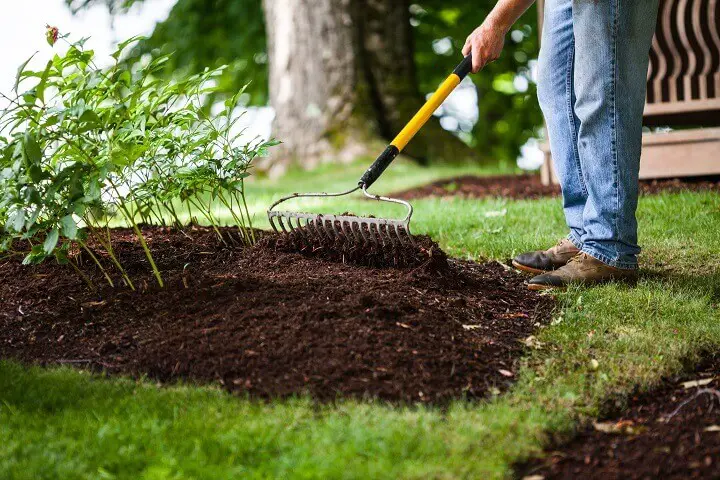
Garden Rake or Bow Rake
A garden rake or bow rake is a metal rake with rigid tines. You can use it to thatch grass, smooth soil, and remove sticks and twigs. You can also use it to remove clumps of weeds and break up garden soil if needed. These are sturdy, heavy rakes.
Leaf Rake
A leaf rake is a lot lighter than a bow rake. It has more flexible tines and is used for gathering up leaves and lighter debris.
Hand Rake
A hand rake is a small hand-held rake that has several stiff tines and sharp ends. It can be used for weeding, digging, and creating trenches for planting.
Harvesting Tools
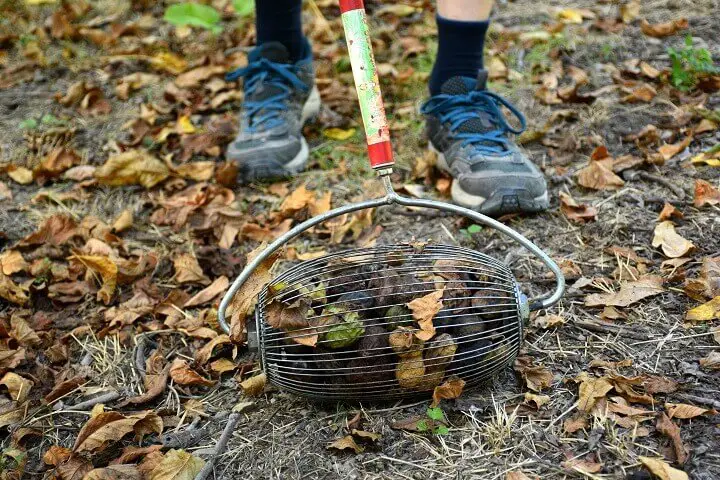
Nut Gatherer
A nut gatherer is an egg-shaped basket on a long handle. You roll the basket through your yard, where it gathers up nuts such as acorns and walnuts. When your nut gatherer is full, hold it over a basket and separate the tines to make space for the nuts to fall out.
Berry Rake
A berry rake looks like a giant comb on the end of a scoop or basket. This helps you to scrape blueberries and other berries off of bushes and gather them up in one easy swoop.
Basket Picker
You may want to try a basket picker to pick larger fruits from tall trees. This is a basket on the end of a long pole. The basket has fingers to help pull the fruit off the tree, where it will fall into the basket.
Harvesting Apron
A harvesting apron is more apparel than a tool, but it still helps! This is a wide, sturdy apron with a big pocket in the front. As you are harvesting, you can place your produce in the apron pocket to keep your hands free while you work.
Strainer Basket
A strainer basket is a basket to put your produce in, but its bottom is made from wire mesh. You can place your produce in the basket and then rinse it right in the garden, so you don’t have to carry all the dirt into the house.
Watering Tools
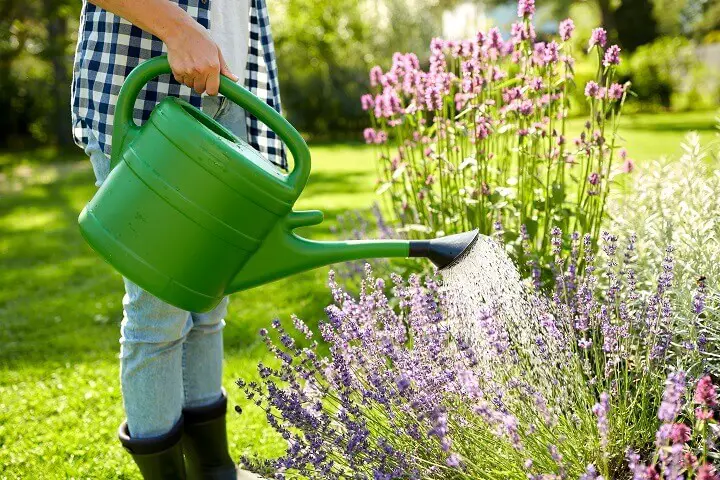
Watering Can
Every good gardener needs a good watering can, especially if you have container gardens or spots where the hose can’t reach. Look for one that is easy to fill, easy to carry, and easy to pour.
Soaker Hose
You can use a soaker hose to cut down on wasted water. A soaker hose is a length of hose that ‘leaks’ water all along the way. Wind your soaker hose through your garden so that it waters all of the plants at once. The soaker hose will cover an area about 1 to 3 feet wide along the length of the hose.
To conserve water, you can bury your soaker hose in a couple of inches of mulch.
Miscellaneous Tools
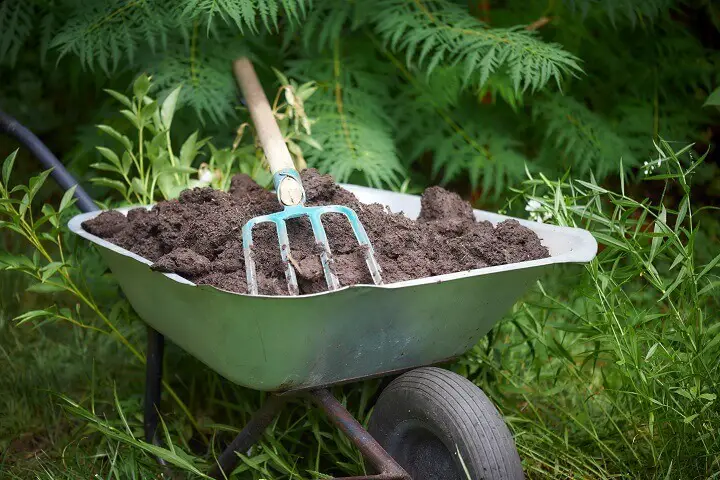
Soil Scoop
Soil scoops are like oversized measuring cups with an ergonomic handle to help you move soil from bags to containers. They help prevent spilling and wasting soil like you would find if you have ever tried to scoop soil with a garden trowel.
Soil pH Meter
A soil tester will tell you whether your soil is alkaline or acidic. This is good to know so that you can amend the soil according to the needs of your plants. Some plants will do better with alkaline soil, and some prefer more acidic.
Wheelbarrow and Tray
A simple wheelbarrow will make hauling yard waste, debris, soil, and plants much easier. Some wheelbarrows come with a tray that can hold your tools, plants, or water bottle.
Garden Gloves
Keep your hands clean – and safe – with a good pair of garden gloves. Find a pair that is comfortable and will protect your hands from bug bites, nettles, or thorns.
Garden Gloves with Claw
For digging and weeding by hand, consider garden gloves with built-in claws. These gloves have long claws attached to the end of each finger so you can dig easily.
Tub Trug
A tub trug is a large, flexible tub with handles. You can use it to carry your harvest, move plants, or remove yard waste.
Boots, Hat, Mosquito-Repellent Wristband
A good pair of boots, a sun hat, and a mosquito-repellent wristband are ‘tools’ that will keep you comfortable as you work.
You don’t need to purchase every possible tool for your garden. Choose the ones that make sense for your situation. If you are only gardening in raised beds, you probably don’t need a gas-powered tiller. Hand tools might be a better choice. On the other hand, if you have lots of soil or yard waste to move, you might need a wheelbarrow rather than just a tub.
Choose good quality tools with ergonomic handles that do the job you need them to do. Your gardening work will be easier and more efficient if you have the right tools for your garden jobs.
Like this post? Don't Forget to Pin It On Pinterest!


